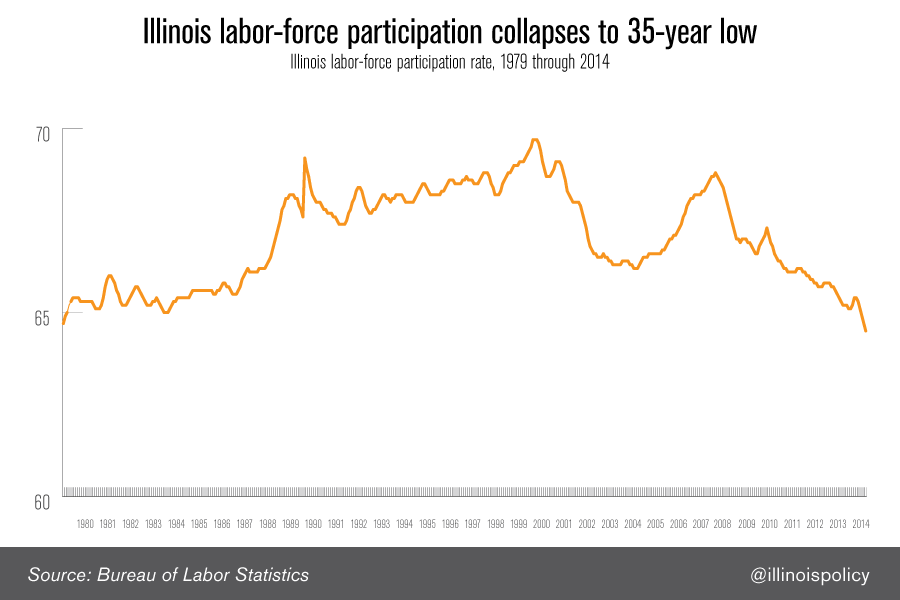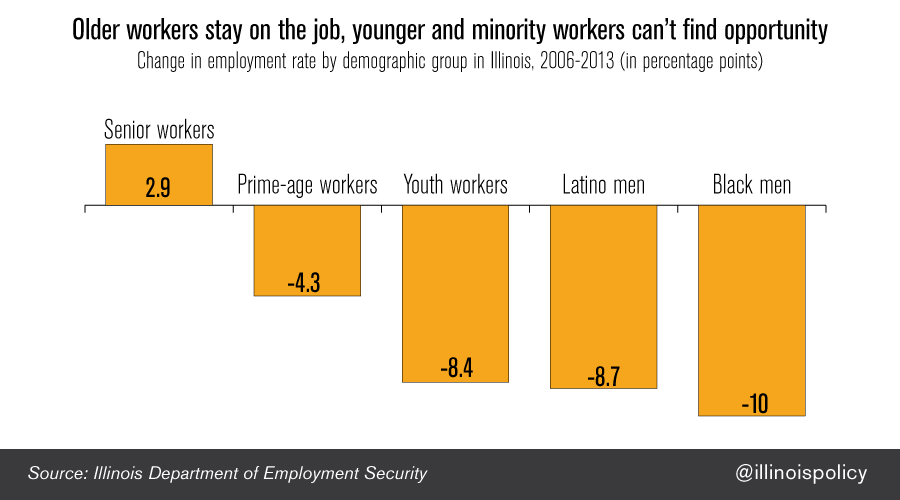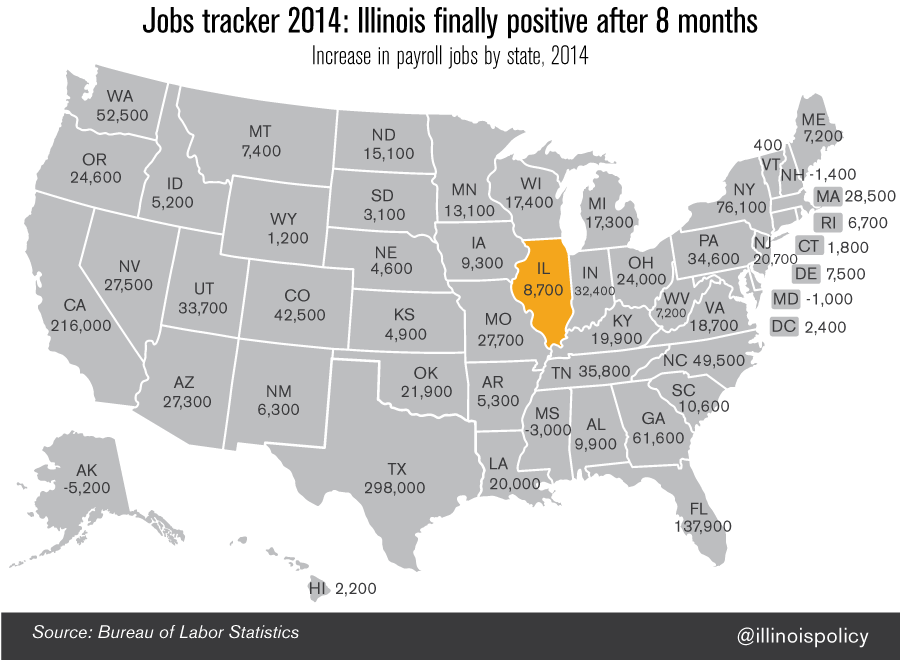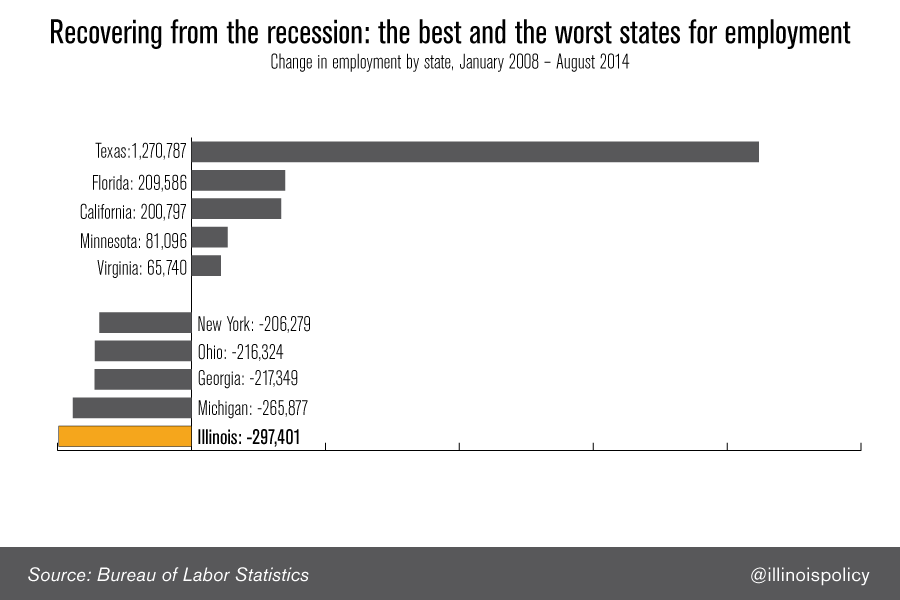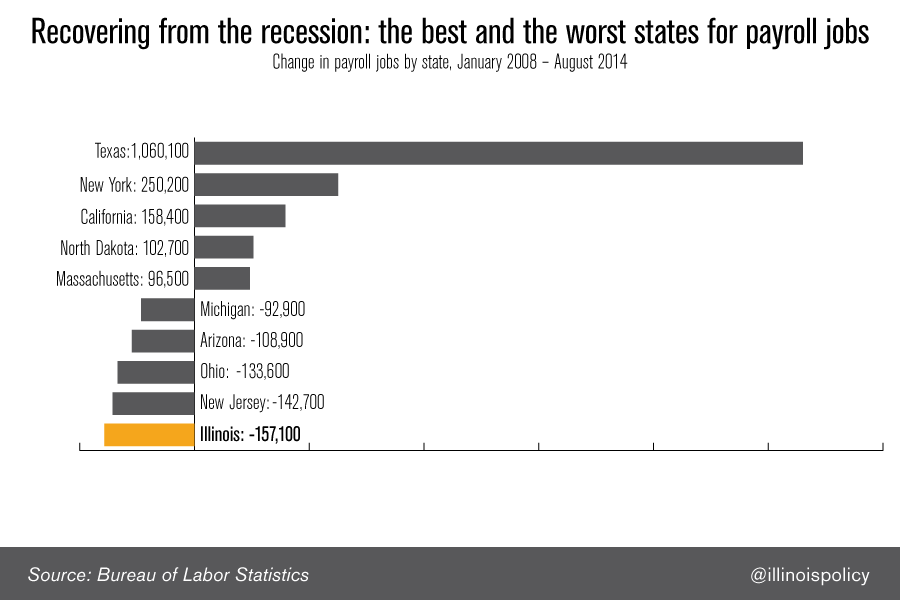Federal numbers show Illinois remains last in post-recession recovery
A day after the Illinois Department of Employment Security reported that Illinois’ workforce shrank by 19,000 people in August, driving Illinois’ labor-force participation rate to a new 35-year low, new data from the Bureau of Labor Statistics confirms the severity of the state’s labor-force dropout crisis. The labor-force participation rate measures the share of Illinois’...
A day after the Illinois Department of Employment Security reported that Illinois’ workforce shrank by 19,000 people in August, driving Illinois’ labor-force participation rate to a new 35-year low, new data from the Bureau of Labor Statistics confirms the severity of the state’s labor-force dropout crisis.
The labor-force participation rate measures the share of Illinois’ adult population that is seeking work. A low labor-force participation rate indicates that Illinoisans cannot find meaningful work, and thus are no longer seeking employment. The Illinois labor force has shrunk dramatically over the last five months, and is still in an ongoing collapse that began with the Great Recession.
Just like in July, labor-force dropouts are the only reason the state’s jobless rate fell in August. Illinois has seen five consecutive months of labor-force dropouts.
Conventional wisdom says that the cause of Illinois’ shrinking workforce is an increase in retirees. However, new research from the Illinois Policy Institute shows the opposite is true. Older Illinoisans (seniors age 55 and older) have become more likely to stay on the job since the recession ended, while youth (age 16-24), prime-age (age 25-54) and male-minority workers have suffered the pain of Illinois’ weak recovery.
The bright spot in the state’s employment report is the addition of 13,800 payroll jobs. This gain pushes Illinois into the positive for jobs on the year for the first time in 2014. Illinois’ population is nearly 13 million. No state performing worse than Illinois on the BLS jobs tracker is even half its size. Illinois remains in last place over the course of the recession era according to all BLS economic data.
Illinois also has more people out of work compared to before the recession than any other state. In addition, in order to reach pre-recession jobs levels, Illinois has to recover more payroll jobs than any other state.
Though Illinois saw one small bright spot in the modest August jobs gain, the bad news regarding the state’s overall jobs climate continues to pour in. Illinois is nowhere near a comeback.

